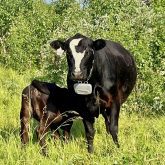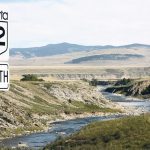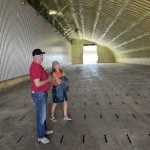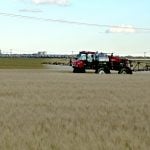A happy cow is a healthy cow. I can’t remember the first time, but I have heard that saying many times over the years. On my ranch, I have found it very beneficial to keep the livestock as stress-free as possible.
When we talk about animal stress, most people think about animal handling when processing or shipping. Of course, we try to practice low-stress animal handling as much as we can. Most of the time when dealing with livestock, slow and steady gets the job done faster. But there are many other types of stress.
Read Also

The Canadian Cattle Association’s international advocacy efforts
Global ag policies affect Canadian food policy, so the Canadian Cattle Association participates in international and domestic forums
It is quite common here in Alberta to have cold stress in the winter. We hit -48 C (-54 F) last winter. When it gets below -30 C (-22 F), we make sure the cattle have plenty of bush available to help stop the wind and plenty of high-quality feed to help keep them warm. The herd needs to produce body heat and we don’t want the wind to blow it away. A trick I learned years ago was to feed in the late afternoon. Peak rumination will be in the middle of the night, creating rumen heat in the herd as they huddle together. A good fat layer and a nice hair coat also help with insulation. Tag on the hair coat reduces the insulation value of the hair. Fresh snow to lay in is also helpful as the snow acts as an insulator.
We don’t see it very often here in Alberta but we had to deal with quite a bit of heat stress this summer. It was the hottest summer I have ever seen here as we went above 40 C (104 F). We set new records for the number of days above 30 C (86 F). When it’s hot, we make sure the animals always have access to a bush paddock, even if we have to open up two or three paddocks to do so. Shade is very important to reduce heat stress. Lucky for us we have many treed areas.
One stress factor that I have rarely heard anyone talk about is water stress. One of the most important jobs on my ranch is to protect my riparian areas. When you get into regenerative grazing, one of the first things you do is protect your water sources by fencing and pumping water to a trough. Almost all of our water sources are fenced so that the animals are not allowed direct access to the riparian area (not all of our water bodies but for sure our water sources.) We see so many benefits from protecting riparian areas. Clean water, increased biodiversity, pest control, healthy animals, fewer treatments and beneficial insects are just a few of the positives.
One of the negatives is the risk of water stress. If you protect your water source, you need to provide water in some other manner. Maybe it is from a well, a pipeline, a solar system, a gravity-flow system, or maybe the water is pumped from the water source in some other manner. However you supply water, there is a risk of the system failing. If I put money into a water system, I would rather put more money into the most reliable system. Water stress has a huge effect on livestock gains. I believe it has just as much effect as the grazing management.
There are times when I have supplied water to a trough but not fenced off the water source. Usually, the livestock prefer to drink from the water trough. That is a simple option to avoid water stress but we lose many of the benefits to the riparian areas. I have also fenced off three sides of the water. This protects most of the edges but allows access to one side if need be. This still provides some of the riparian area management and reduces the water stress.
This summer was a perfect example of potential water stress. The extreme heat alone can cause water stress. The hotter it is, the more water the livestock need. As fast as the pump can pump, there is still a lineup midday for water. If possible, I would always recommend extra storage capacity and plenty of bunk space to accommodate those hot days. The trough needs to fill faster than the herd can drink. When I heard how hot it was going to be this July, I set up a second system and a second trough for my big herd in advance. Even with the best of systems, we plan for a water system failure.
I always have a backup plan ready, just in case. This summer, because of the drought, our main issue was a lack of water in our dugouts. We rely on spring snowmelt to fill water bodies and we did not get much this spring. So far we have completely emptied about six water sources but I was a boy scout. The motto is “always be prepared.”
In these situations, solar systems will start to fail. Later in the season, the water levels are lower, the animals are needing more as they are growing and the day length is getting shorter. This is a recipe for disaster. I already have extra solar modules ready or a generator on standby to help supplement the solar with a sump pump and/or also help charge the batteries. If you show up midday and let the generator run for a few hours, it will take the extra stress off the solar system. This year, many of the water sources were just too low for the solar and we switched entirely to the generator.
My gravity flow systems are my most reliable systems normally, but I keep a close eye on water levels in dry years. If my dugouts run dry, my gravity flow systems stop working. I had two run dry on me this season, but I caught them right away and already had a plan to open another paddock to allow access to a second water system. I would rather graze a paddock or two improperly than water-stress my herds.
If you have ever had a water system failure, you know it can be a shoving match around the trough when you start the pump again. The best tool I have to reduce stress around the water trough is to open a new paddock of grass. Most of the herd will head to the fresh grass and then come back slowly to drink. A distraction is usually all that is needed.
These are several examples of livestock stress and ways of managing it. I just bring them up to get you thinking about it. Are there things you can change or plan for to help reduce stress for the livestock and, of course, stress on you? You know the saying, “A happy rancher is a healthy rancher.”

















